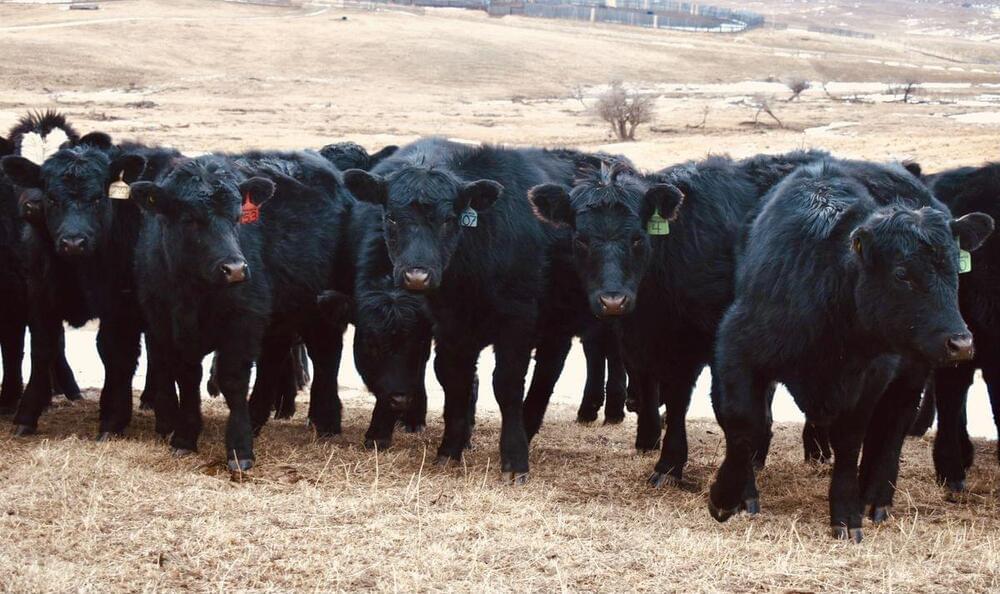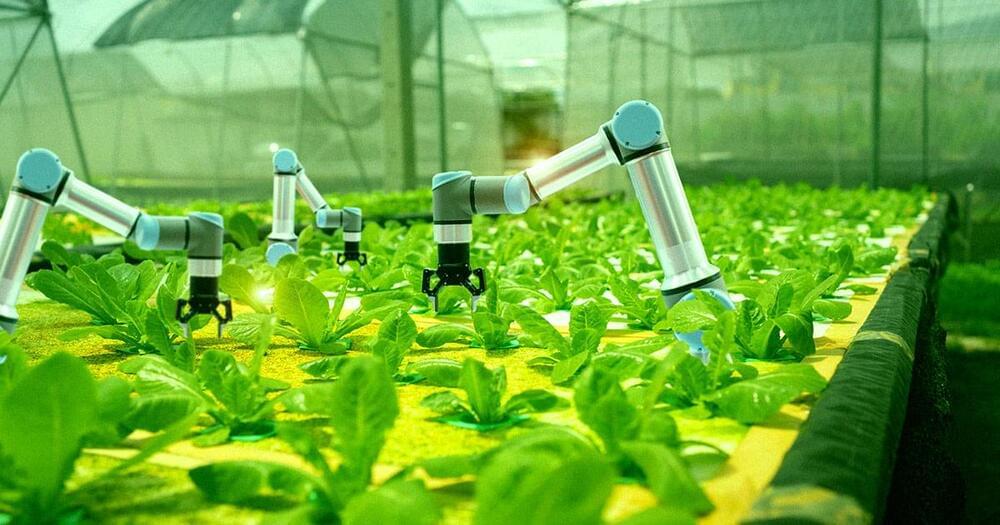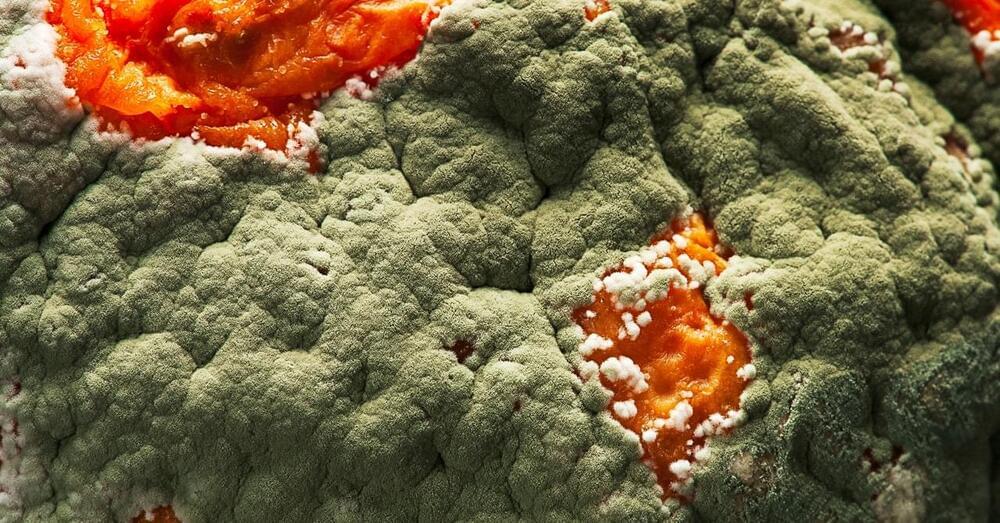Robots eliminate weeds with lasers to solve one of the farming industries’ biggest challenges.
Category: food – Page 174


The ethics of digital technology in the food sector
Imagine a world in which smart packaging for supermarket-ready meals updates you in real-time to tell you about carbon footprints, gives live warnings on product recalls and instant safety alerts because allergens were detected unexpectedly in the factory.
But how much extra energy would be used powering such a system? And what if an accidental alert meant you were told to throw away your food for no reason?
These are some of the questions asked by team of researchers, including a Lancaster University Lecturer in Design Policy and Futures Thinking, who—by creating objects from a “smart” imaginary new world—are looking at the ethical implications of using artificial intelligence in the food sector.

More people are eating bugs — but is it ethical to farm insects for food?
The rise in insect farming means questions about insect sentience and slaughter are no longer just philosophical: The well-being of trillions of creatures is at stake.
What is the life of a cricket worth?
Insect farming is a rapidly growing industry, with hundreds of companies worldwide rearing insects at industrial scales. The global value of insect farming is expected to surpass US$1.18 billion by 2023.
Farmed insects, or “mini-livestock,” refers to insects such as crickets and mealworms raised for the sole purpose of being sold as food or animal feed.
Aquaponic farms in shipping containers: The future of food? | Challengers
Mike straight, founder & CEO of farmpod.
Up next ►► Vertical farms could take over the world https://youtu.be/J4SaSfnHK3I Instead of shipping food all around the world, imagine your own food coming from your farm in a shipping container, just outside your backdoor. That’s the vision of FarmPod, a St. Croix-based startup looking to completely redefine our relationship with food with a fully automated vertical aquaponic system. This self-contained, solar powered farming method uses a fraction of the water and space of a traditional farm, and even uses zero pesticides. The closed loop system essentially mimics nature’s ecosystems, like a pond. Lettuce, strawberries, kale, collard greens and more can grow in the pod. And, since the produce doesn’t need to be picked early to be shipped to a grocery store, the owner can enjoy their harvest at its peak nutritional value and taste. Produce isn’t all — FarmPod can provide an aquaponic home for tilapia, catfish, crayfish, koi, and freshwater prawns. FarmPod uses automated software and hardware to make their pod’s aquaponics system as easy to run as possible. Mike Straight, the creator and CEO of FarmPod, wants to provide a healthy, hyper-localized source of food with a minimal carbon footprint. “We’re trying to feed the world one pod at a time by hyper-localizing farming, and taking the farm and putting it right in front of the place that needs to use it,” says Straight. Read the full story here ►►
https://www.freethink.com/series/challengers/aquaponics ◠◠◠◠◠◠◠◠◠◠◠◠◠◠◠◠◠◠◠Read more of our stories on aquaponics and sustainable farming:
Vertical farms could take over the world.
►► https://www.freethink.com/series/hard-reset?media_id=avWfzm8Q
How vertical farming can save the planet and feed the world.
►► https://www.freethink.com/series/make-it-count?media_id=bEIXKavd.
New startup takes vertical farming underground — literally.
►► https://www.freethink.com/environment/underground-farm ◠◠◠◠◠◠◠◠◠◠◠◠◠◠◠◠◠◠◠About Freethink.
No politics, no gossip, no cynics. At Freethink, we believe the daily news should inspire people to build a better world. While most media is fueled by toxic politics and negativity, we focus on solutions: the smartest people, the biggest ideas, and the most ground breaking technology shaping our future.◡◡◡◡◡◡◡◡◡◡◡◡◡◡◡◡◡◡◡Watch our original series:
► Hard Reset: https://freeth.ink/youtube-hard-reset.
► Just Might Work: https://freeth.ink/youtube-just-might-work.
► Challengers: https://freeth.ink/youtube-challengers Enjoy Freethink on your favorite platforms:
► Daily editorial features: http://www.freethink.com
► Solutions-based stories, straight to your inbox: https://www.freethink.com/subscribe.
► Facebook: https://www.facebook.com/freethinkmedia
► Instagram: https://www.instagram.com/freethink
► Twitter: https://twitter.com/freethinkmedia
► Join the Freethink form: http://www.facebook.com/groups/freethinkforum

4 Israeli inventions feature in TIME magazine’s 100 Best Inventions for 2021
OrCam’s reading device, ElectReon’s ‘smart road’ tech, a sensor for farming and security drones all make the list.
1. OrCam Read, a smart reading support device developed by OrCam Technologies, the maker of artificial intelligence-based wearable devices to help the blind and visually impaired read texts via audio feedback. The company launched OrCam Read in 2,020 a handheld digital reader meant to help people with language processing challenges, including dyslexia. The device (priced at $1,990) captures and reads out full pages of text and digital screens, and follows voice commands.

Robotics CEO Says Goal Is to “Remove” Human Labor From Economy
In response to the so-called “labor shortage,” companies are looking to finally replace replace workers with machines — and robotics companies couldn’t be happier to oblige.
David Zapico, the CEO of robotics company Ametek Inc., told Bloomberg News that his company is “firing on all cylinders” because, as he put it, “people want to remove labor.”
He’s not alone in his musings. Executives at Hormel Foods Corp and Domino’s Pizza also confirmed to Bloomberg that they’re investing in automation in an effort to reduce labor costs and respond to a “tight labor supply,” as one Hormel vice president put it.

DoorDash to acquire food delivery company Wolt
Finland-based Wolt was founded in 2014 by Miki Kuusi, who, upon the deal closing, will run DoorDash International and report to Xu. The company has over 4,000 employees across 23 countries and its technology enables users to easily discover and receive food via its platform by selecting a restaurant, placing the order and hitting send.
Wolt has raised over $850 million to date, according to its Crunchbase profile. Its most recent funding round was $530 million in January, led by Iconiq Growth, with participation from Tiger Global, DST, KKR, Prosus, EQT Growth, EQT Ventures and Coatue.
Wolt represents DoorDash’s sixth acquisition according to Crunchbase data and its second in 2,021 which includes an acquisition of Chowbotics earlier this year. The latest transaction is expected to close in the first half of 2022.
Energy Storage Breakthrough — Solid Hydrogen Explained
Solid Hydrogen Explained. Get Surfshark VPN at https://surfshark.deals/undecided and enter promo code UNDECIDED for 83% off and 4 extra months for free! Green hydrogen is touted to be one of the essential ingredients for the sustainable energy mix of the future. Yet, there’s an…invisible…yet big problem. Storage, transport, and operation is complicated and expensive, but what if we could create and store solid hydrogen for cheap? A start-up may have a solid technology that could speed up the energy transition. Spoiler: It’s so good it was banned!
Watch Solar Panels Plus Farming? Agrivoltaics Explained: https://youtu.be/lgZBlD-TCFE?list=PLnTSM-ORSgi5LVxHfWfQE6-Y_HnK-sgXS
Video script and citations:
https://undecidedmf.com/episodes/forget-solid-state-batterie…-explained.
Follow-up podcast:
Video version — https://www.youtube.com/channel/UC4-aWB84Bupf5hxGqrwYqLA
Audio version — http://bit.ly/stilltbdfm.
👋 Support Undecided on Patreon!
https://www.patreon.com/mattferrell.
⚙️ Gear & Products I Like.
